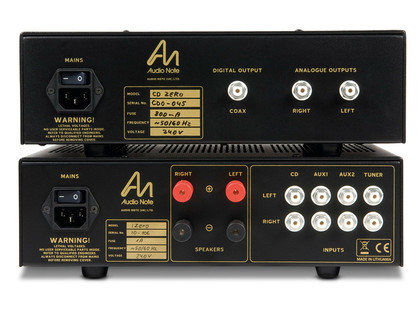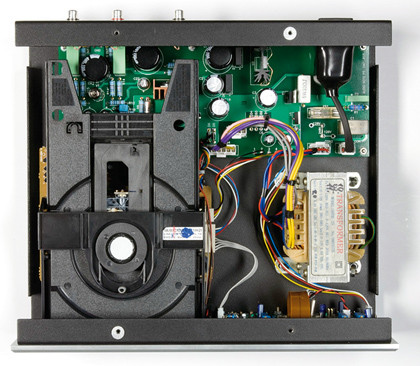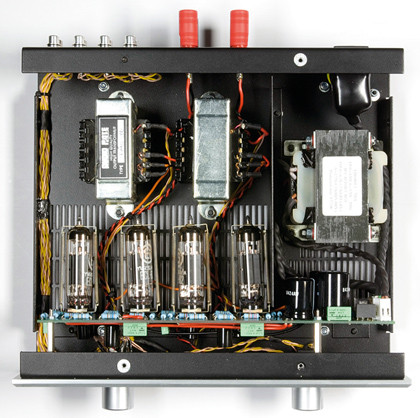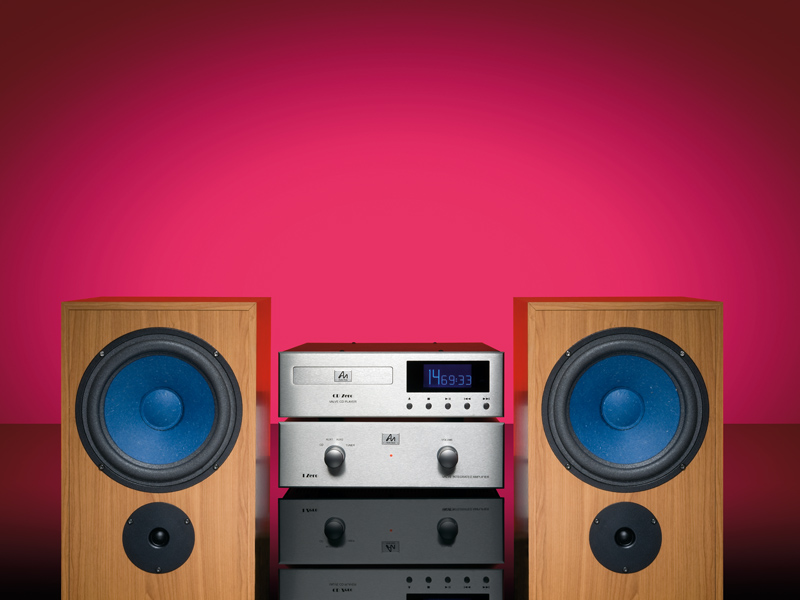TechRadar Verdict
Pros
- +
Clean, open, natural, tonally realistic sound
- +
Decent build quality
- +
Great price/performance
Cons
- -
No digital input
- -
Would have been useful if volume control worked with amp
- -
Limited output power
Why you can trust TechRadar
High-end audio tends to be a tad expensive. When a manufacturer sets out to employ specialised military-grade internal components that are large and massively over-specified, you can't expect prices to be low.
Nevertheless, some high-end manufacturers relish the challenge of designing products that deliver a taste of high-end performance at more wallet-friendly prices. After all, it's not easy to produce outstanding results within tight budget constraints, but Audio Note's Zero System aims to do just that.
It offers high-level performance at prices that are realistic. Individually, each item boasts sonically excellent results which compare favourably with similarly priced (and more expensive) competition. But, at the same time, there's the promise of something more: an overall result that's greater than the sum of the parts. And it's when you put the whole thing together that the magic begins.
Less is more
In keeping with the minimalist ethos of high end, each Zero System component is a simple no-frills design. Audio Note takes a less-ismore approach, so don't expect to find anything more than the absolute basics.
The IZero integrated amplifier offers four line-level inputs, plus a set of loudspeaker outputs. There's a volume control and an input selector, and that's it!

The Zero CD/II CD player is only a little less Spartan: you get the usual operational controls, a single set of unbalanced analogue outputs, plus a digital output. A remote handset is supplied with the CD player and there are buttons for direct track-selection and fast-search, a button to dim or turn off the illuminated display, plus buttons for repeat (one track or the whole disc), random track playback and time – either track elapsed time, remaining time (track or disc) and total elapsed time. There are additional buttons for volume and input selection that, unfortunately, have no effect on the IZero amplifier.
Both amp and CD player feature tubes. The amplifier employs four ECL82 output tubes (two per channel), run in Class A up to about 80 per cent of their power and then switched to Class A/B.
The CD player features a single 6111WA tube in the analogue output stage, with a Philips TDA 1543 filterless DAC used without up-sampling. The transport is a modified Philips L1210. The 6111WA tube is soldered in place and Audio Note claims its lifespan should exceed 100,000 hours.

Retro appearance
Audio Note offers its Zero electronics with a choice of fascia plates – silver alloy, or black acrylic. Our review samples came in the former and look understated, but smart.
There's nothing flashy about the build quality. Each item is nicely finished, but the plain somewhat 'boxy' styling means there's not much 'wow' factor. Both amplifier and CD player exude a distinct retro appearance and will appeal to those who prefer hi-fi with a traditional look.
The AZ Two loudspeakers can be obtained in black ash, rosewood, beech, or cherry veneers and again styling is fairly traditional. No grilles are supplied, but these can be bought as accessories for about £60.
Given all this, it's unlikely that anyone will choose the Zero system for 'battleship build quality' or stylish appearance. So, whether or not it offers good value is intimately related to how highly you rate its sound quality.
The CD/II and AZ-Two speakers are both very fine-sounding products that will easily stand comparison with comparably priced (and dearer) equivalents from other manufacturers.
The CD player is especially good, giving a rich warm, yet open tonality that is unusually 'analogue' in nature.
The amplifier is excellent too. While its lack of power makes it expensive on a pound-per-watt basis and limits its usage to efficient speakers only; it sounds absolutely gorgeous – the audio equivalent of smooth rich chocolate!

Lively and assertive
Since the IZero amplifier offers just eight watts per channel, power output could be an issue. Fortunately, the speakers offer reasonably high sensitivity (around 93dB) and make the most of the power available. They seem fairly easy to drive, too; our guess is they don't represent a nasty difficult load and this helps maximise the IZero's limited output.
The innate naturalness of the amplifer's ECL82 output tubes helps ensure a gorgeously smooth and richly detailed sound that has excellent clarity and definition. And, allthough 'only' eight watts, the sound has remarkable presence, plus surprising weight and drive, with impressively crisp transients.
When partnered with sensitive speakers, like the AZ-Twos, youu'd never suspect the IZero has so little power – it sounds unfeasibly immediate and assertive. If you push it past its power limits, the sound tends to compress slightly and maybe gets a wee-bit congested. But, on most music, most of the time, you can play as loudly as you like without obvious power-limitation problems.
The CD Zero/II provides a smooth, clean, refined-sounding source that combines dynamic presence with a rich, beguiling silky-liquidity. It really is a CD player for those who don't like CD.
The AZ-Two loudspeakers make the absolute most of what they're given, sounding lively and assertive, with lots of brilliance and detail. A slight forwardness in the upper midband, ensures the music projects into the room with plenty of authority and presence.
We used the Zero system in a fairly large room and found it able to fill the space with relative ease. It went as loud as we would ever want. Even on uncompressed recordings of vocal music (opera, choral, classical lieder), which normally test low-powered amps to destruction, the system covered its tracks. If the amp was under pressure, it hardly ever showed signs of distress.
We're not recommending this system for headbangers. But, although (on paper) somewhat challenged in the wattage stakes, lack of amplifier power is much less of an issue than you might think. On rock or classical, the sound is sharp, transparent; very clean and nicely balanced. It's subtle and delicate, yet suitably gutsy and immediate when the music demands muscle.
As previously mentioned, the tonal balance exhibits a mild degree of upper midband forwardness and this sometimes results in a sense of peakiness. However, after listening for a few minutes, this impression diminishes and one quickly adjusts to what's on offer.
The AZ-Two is very good at pitch differentiation and has excellent timing. You're literally drawn into the music. We found the Zero system very good at conveying the impression of people singing or playing in a unified coherent manner, so that the music (and performance) makes sense.
Our review samples had hemp-coned bass/mid drivers. What's more, the clarity and definition proved excellent, conveying a clear impression of forward momentum. Subjectively, the speakers produce nicely extended bass – the bottom end might not seem obviously 'full' or powerful, but it's clean and free from smearing.
Claimed low-frequency point is about 28Hz, but we found a reasonably healthy output down to 20Hz. Placing the speakers near to walls or corners will increase bass output.
A winning combination
Audio Note's Zero system is a great advertisement for the benefits of partnering a good low-powered amp with sensitive loudspeakers. It's a winning combination of cohesiveness and integration; brilliance and detail; dynamics and attack.
With each individual component being very well matched, the overall result is superb and, as we've already indicated, as separates they need no excuses making for them.
Obviously, the lack of power is a potential limitation that needs consideration. But, when partnered with an efficient loudspeaker like the AZ-Two, even this is hardly an issue. Indeed, if you play your Zero system at full tilt, you'll probably get complaints from your neighbours!
Follow TechRadar Reviews on Twitter: http://twitter.com/techradarreview
